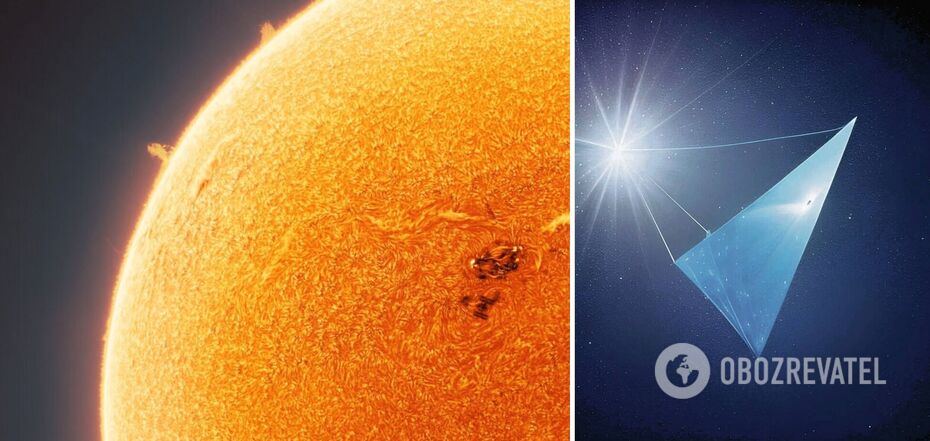News
The Earth wants to be hidden from the Sun under a space umbrella on an asteroid: it's real, but there is a problem
The problem of global warming on Earth has become so urgent for humanity that it will probably have to be solved by some rather absurd method. One of these options is a kind of space umbrella that will be attached to a sufficiently massive asteroid and will reflect some of the sunlight directed to our planet.
A study on the implementation of this idea was published in the journal Proceedings of the National Academy of Sciences. Although the idea sounds quite fantastic, scientists do not rule out that it is quite realistic to implement it, but there is a problem with the 35,000-ton weight.
Astronomer Istvan Sapudi of the University of Hawaii's Institute of Astronomy believes that humanity could catch an asteroid, park it between the Earth and the Sun, and tie an umbrella to it to block some of the sunlight.
The idea of such a solar shield is not new, but the option proposed by Sapudi is much cheaper and easier to implement.
The idea came to the scientist when he saw people walking in the Hawaiian sun during the day, hiding behind an umbrella.
"I wondered if we could do the same for the Earth and thus mitigate the impending climate catastrophe," the scientist explained.
"Such an umbrella would not block all the sunlight, but only a small part of it. This could be enough to counteract the rise in global temperatures. Even if it didn't solve the problem completely, it could give humanity more time to solve the climate problems caused by human activities.
The problem with the shield idea was that it required a fairly massive ballast that would prevent the shield from being blown away by solar wind and radiation pressure. To produce it on Earth and then lift it into space was an audacious but unrealistic idea. So Sapudi thought it would be logical to use asteroids already in space for this purpose.
According to his calculations, if such an umbrella is placed at the Lagrange point (a place where the gravitational attraction of the Earth and the Sun has the same force and allows the third object to be in a steady state - Ed.), the mass of the shield and counterweight can be reduced to only 3.5 million tons.
This weight may come as a shock, but it is 100 times less than previous estimates for an untethered shield, Science Alert notes. In addition, the umbrella shield itself will weigh only 1% of this mass - 35,000 tons. The rest of the mass is an asteroid that just needs to be captured and pushed into the right place. Moreover, NASA already knows how to change the asteroid's trajectory.
However, it is the weight of the shield that is currently the biggest problem for scientists, as none of the rockets developed by mankind is capable of lifting 35,000 tons into space. The record-breaking Saturn V rocket is capable of lifting 140 tons of payload into low Earth orbit. Elon Musk's giant Starship rocket will be more efficient, but only to lift 250 tons of payload.
Nevertheless, Sapudi believes that if humanity starts working on research and development now, the idea can still be implemented before it is too late for the climate on Earth.
He also notes that such a shield could later be turned into a source of solar energy for exploring the Earth or the solar system.
Subscribe to OBOZREVATEL's Telegram, Viber, and Threads channels to keep up with the latest developments.




























